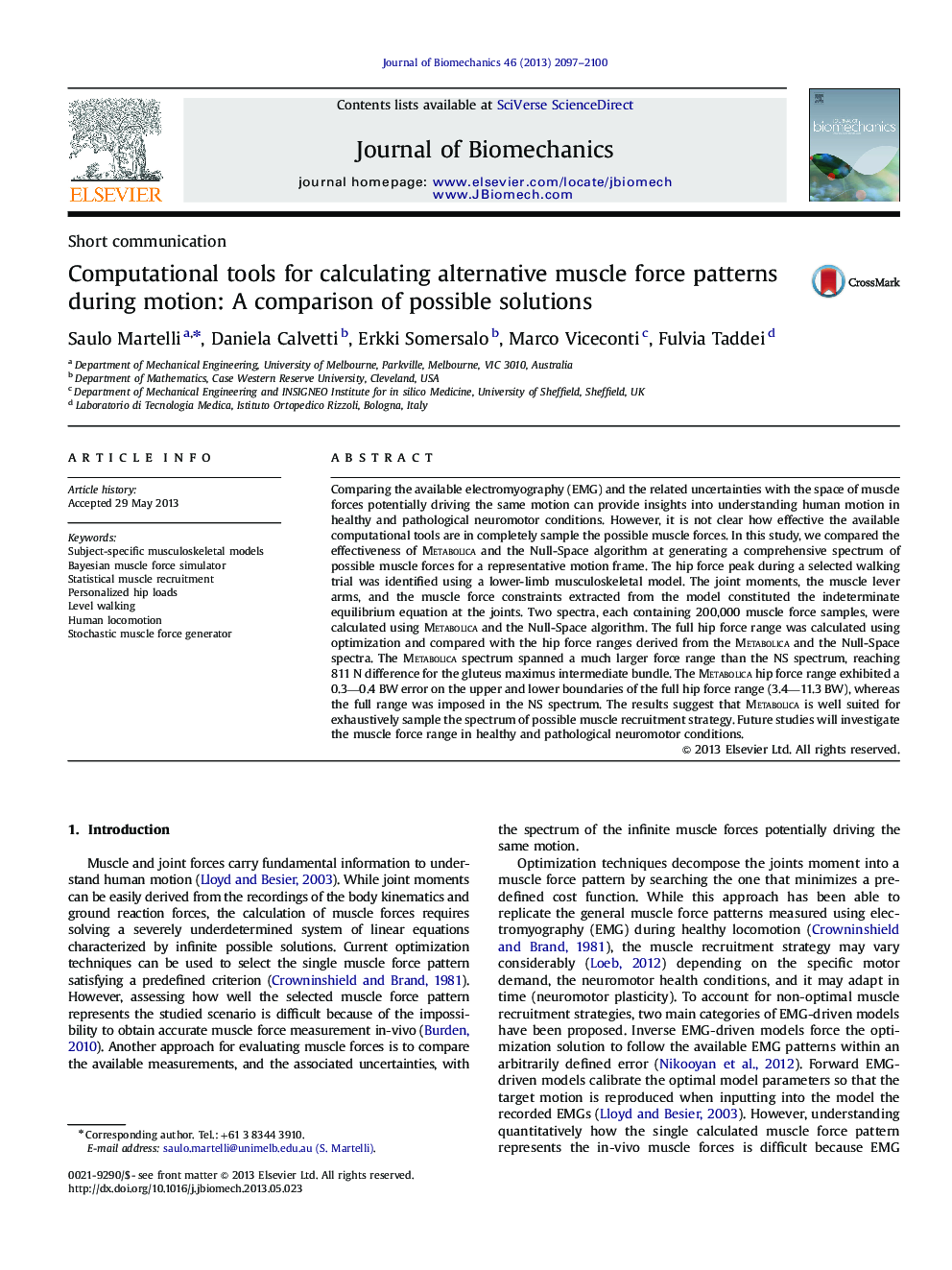| Article ID | Journal | Published Year | Pages | File Type |
|---|---|---|---|---|
| 10432598 | Journal of Biomechanics | 2013 | 4 Pages |
Abstract
Comparing the available electromyography (EMG) and the related uncertainties with the space of muscle forces potentially driving the same motion can provide insights into understanding human motion in healthy and pathological neuromotor conditions. However, it is not clear how effective the available computational tools are in completely sample the possible muscle forces. In this study, we compared the effectiveness of Metabolica and the Null-Space algorithm at generating a comprehensive spectrum of possible muscle forces for a representative motion frame. The hip force peak during a selected walking trial was identified using a lower-limb musculoskeletal model. The joint moments, the muscle lever arms, and the muscle force constraints extracted from the model constituted the indeterminate equilibrium equation at the joints. Two spectra, each containing 200,000 muscle force samples, were calculated using Metabolica and the Null-Space algorithm. The full hip force range was calculated using optimization and compared with the hip force ranges derived from the Metabolica and the Null-Space spectra. The Metabolica spectrum spanned a much larger force range than the NS spectrum, reaching 811Â N difference for the gluteus maximus intermediate bundle. The Metabolica hip force range exhibited a 0.3-0.4 BW error on the upper and lower boundaries of the full hip force range (3.4-11.3 BW), whereas the full range was imposed in the NS spectrum. The results suggest that Metabolica is well suited for exhaustively sample the spectrum of possible muscle recruitment strategy. Future studies will investigate the muscle force range in healthy and pathological neuromotor conditions.
Keywords
Related Topics
Physical Sciences and Engineering
Engineering
Biomedical Engineering
Authors
Saulo Martelli, Daniela Calvetti, Erkki Somersalo, Marco Viceconti, Fulvia Taddei,
